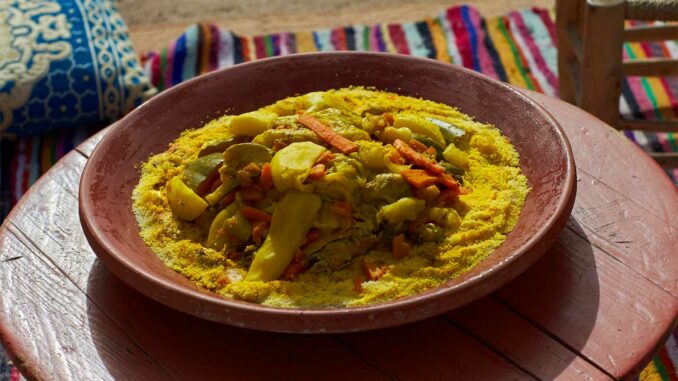
Explore Moroccan cuisine—couscous, tagine, pastilla, street food. Discover signature spices, regional flavors, and techniques shaping a vibrant culinary culture.
Explore the depth of Moroccan cuisine, a sensory journey built on spices, time-honored dishes, and singular flavors. This is a culinary culture shaped over centuries, refined by the movement of peoples and ideas. Morocco’s table reflects Berber roots, Arab and Andalusian influences, and threads from Sub-Saharan Africa, forming a mosaic of tastes and aromas that invite discovery. Meals are social and generous; hospitality is a principle as much as a practice, and everyday cooking often unfolds into shared feasts.
The Traditional Dishes
Couscous, tagine, and the art of gathering
Morocco’s classic dishes are a hymn to conviviality and variety. At the center stands couscous, a grain that draws families to the same table and carries vegetables, legumes, and meats with effortless grace. Tagine names both the clay vessel and the slow-cooked stew inside it, where meat, vegetables, and dried fruits meld beneath a conical lid that returns aromas to the pot. Pastilla—merging sweet and savory—layers crisp warqa pastry with pigeon or chicken, almonds, cinnamon, and powdered sugar for a dramatic interplay of textures. Harira, a fragrant, nourishing soup of tomatoes, lentils, chickpeas, and herbs, traditionally appears at sunset during Ramadan, but its comfort spans the year.
The Spice Palette
Ras el hanout and the Moroccan grammar of taste
Moroccan cooking is inseparable from its spice cabinet. Ras el hanout, literally “the best of the shop,” is a bespoke blend that may include 20 or more spices, capturing the essence of the country’s gastronomic style. Saffron from Taliouine lends a golden hue and delicate perfume to festive dishes. Cinnamon, cumin, coriander, paprika, and ginger anchor everyday cooking, each adding a distinct register to already layered flavors. Used with restraint and judgment rather than force, spices amplify the core ingredients and give Moroccan cuisine its unmistakable depth.
The Techniques
Slow heat, live fire, and patient hands
Preparation is an art passed down through families and apprenticeships. Slow cooking—especially in tagines—allows flavors to penetrate and harmonize, turning humble cuts and seasonal produce into complex stews. Charcoal grilling is equally prized, imparting a gentle smokiness to meats and vegetables. Moroccan pastry demands precision and dexterity: rolling paper-thin sheets, shaping intricate forms, and glazing almond-honey sweets. Across savory and sweet, technique serves balance—between spice and freshness, richness and lightness, texture and aroma.
The Regional Tables
Coast, mountains, and desert on the plate
Regional cuisines give Morocco its breadth. Along the Atlantic and Mediterranean coasts, fish tagines and grilled seafood set the tone, often brightened with chermoula and citrus. In the Atlas Mountains, dishes are more robust, leaning on root vegetables, preserved meats, and warming spices. In Saharan regions, the pantry adapts to scarcity and tradition: dates take center stage, and “sand bread” baked beneath hot embers speaks to the ingenuity of desert cooking. Each landscape writes its own chapter, yet all remain recognizably Moroccan.
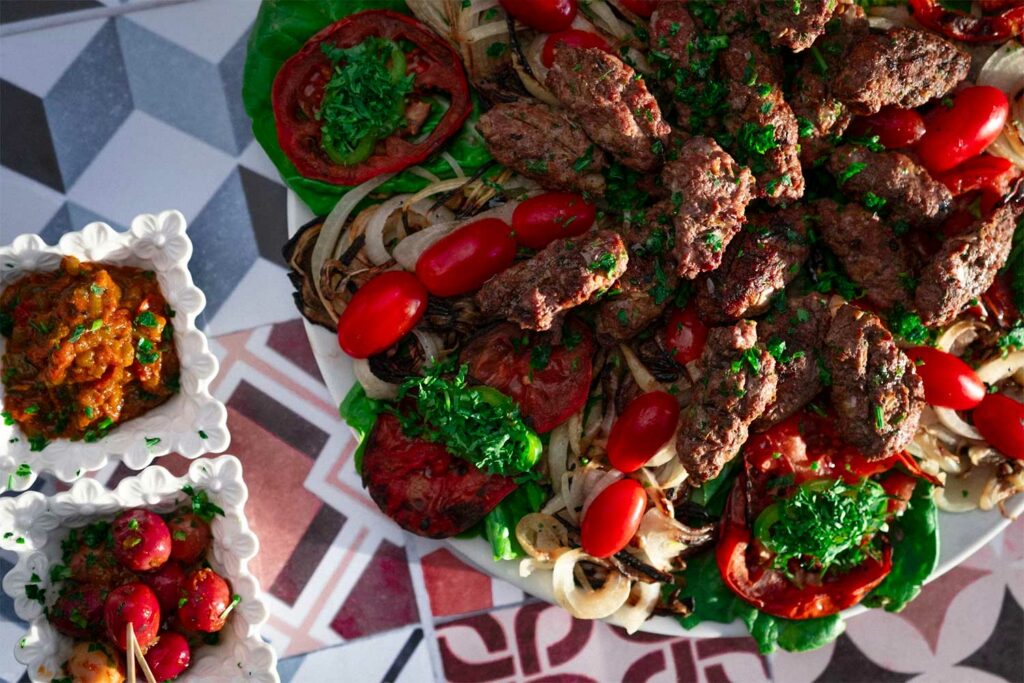
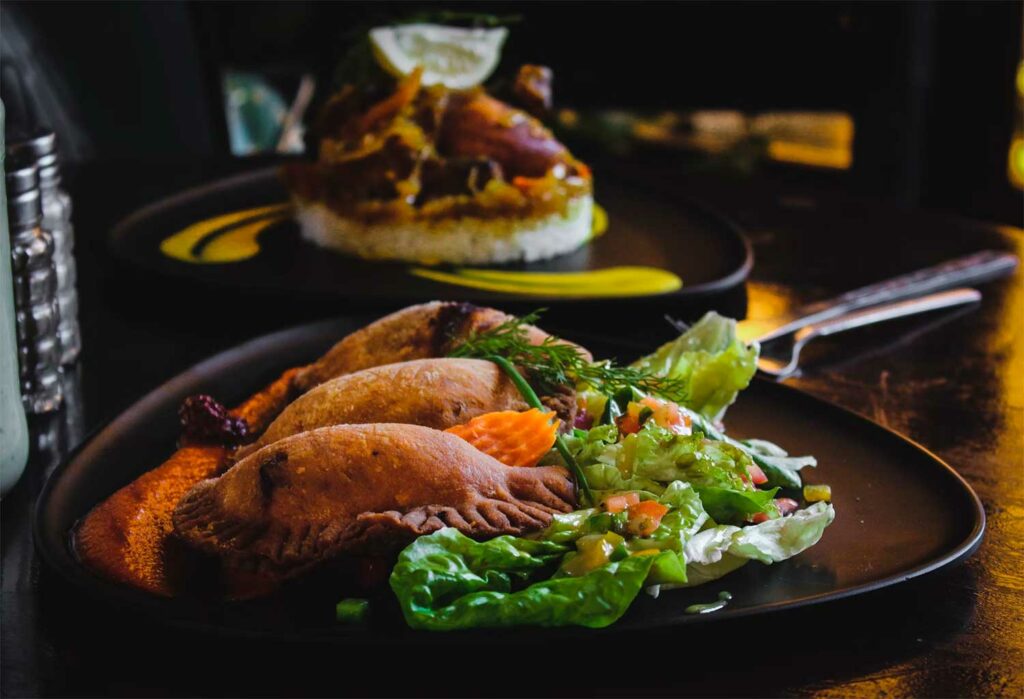
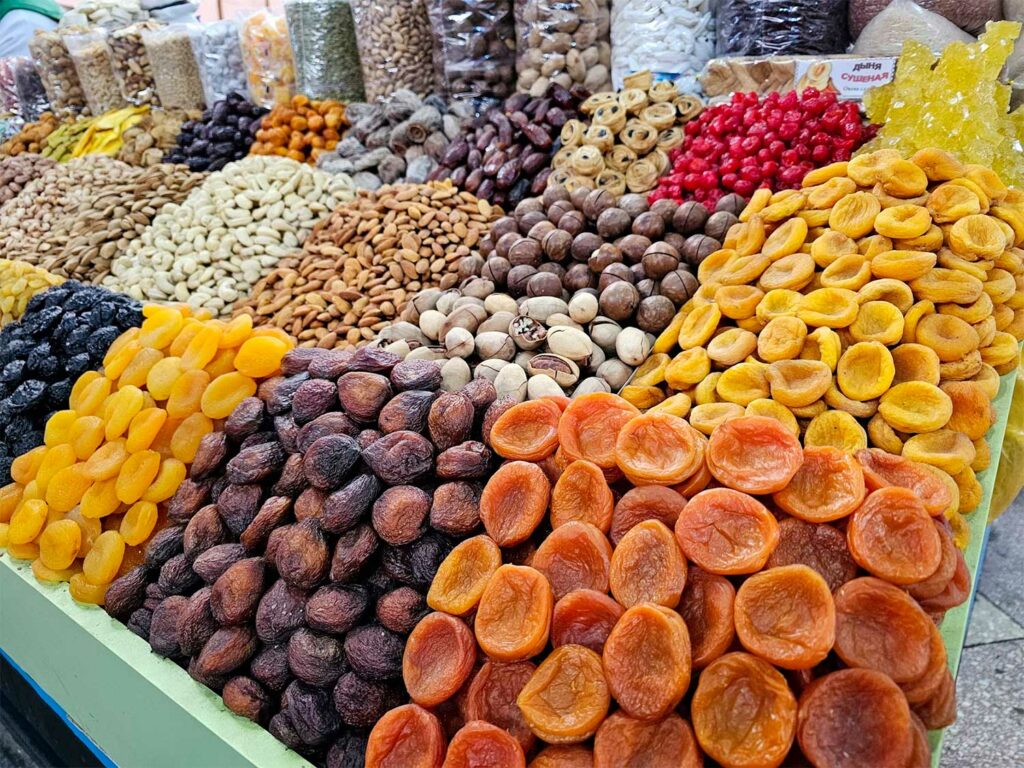
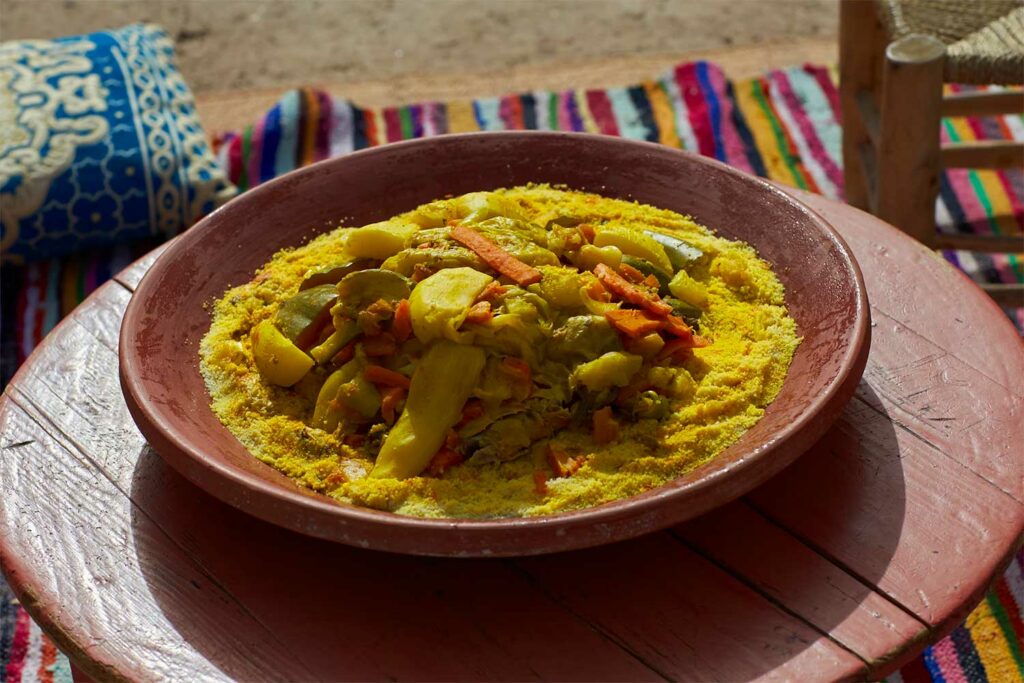
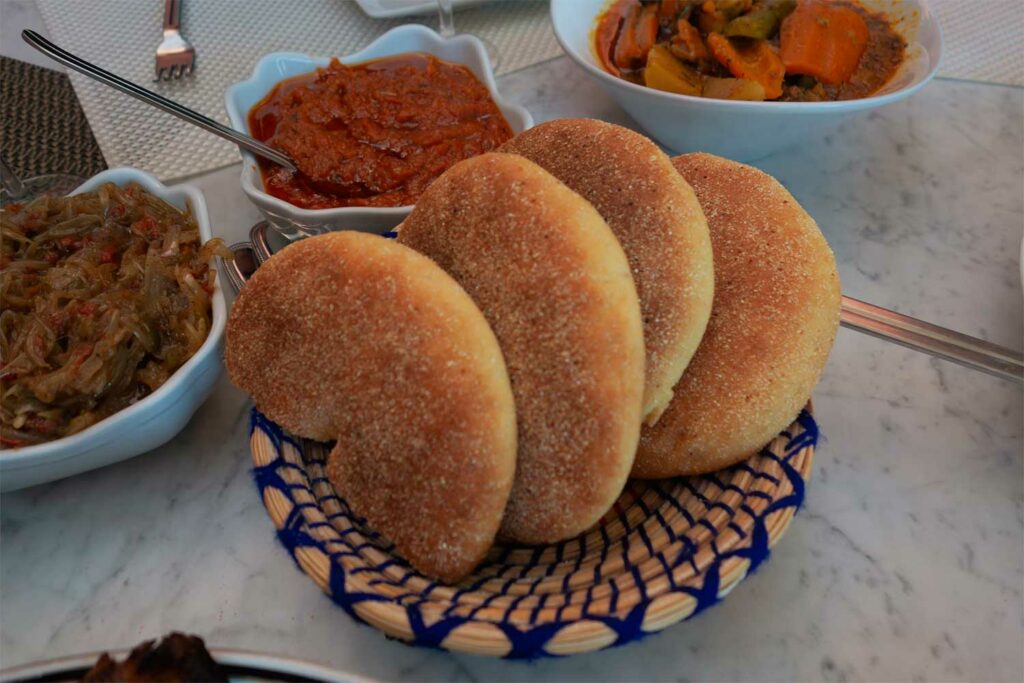
The Street Food
Markets, stalls, and the pulse of everyday appetite
Moroccan street food showcases immediacy and authenticity. Skewers of minced lamb or beef (kefta) hiss over charcoal, tucked into bread with fresh herbs. In port towns, vendors assemble fried fish sandwiches from the morning catch. Snails simmer in a spiced broth, served steaming in small bowls. Msemen—layered, pan-griddled pancakes—arrive plain or filled, perfect with a glass of mint tea. This fast, flavorful cooking is democratic and delicious, a daily proof that technique and taste need no ceremony.
The Maghrebi Cousins
Shared roots, distinct signatures
Moroccan cuisine shares foundations with its neighbors yet keeps a clear identity. Ras el hanout is especially emblematic of Morocco’s spice profile, while Algerian kitchens often lean on chermoula as a primary marinade and seasoning. Tunisia favors a bolder hand with heat; harissa and fresh chiles bring sharper fire to couscous and stews. These differences are less about rivalry than about terroir and history. Each country interprets a common grammar through its own ingredients and temperament.
The Chefs and Restaurants
Ambassadors at home and abroad
Morocco’s flavors travel well, thanks to chefs who carry them into contemporary dining. Figures such as Mourad Lahlou and Najat Kaanache reinterpret tradition with modern technique, introducing new audiences to time-honored preparations while honoring their roots. Within Morocco and far beyond, restaurants present updated takes on classic dishes—lighter reductions, seasonal sourcing, refined plating—without severing the link to home cooking. The result is a living cuisine that evolves, teaches, and delights, from family tables to the world’s gastronomic stages.
Cook in France is your independant source for food in France.